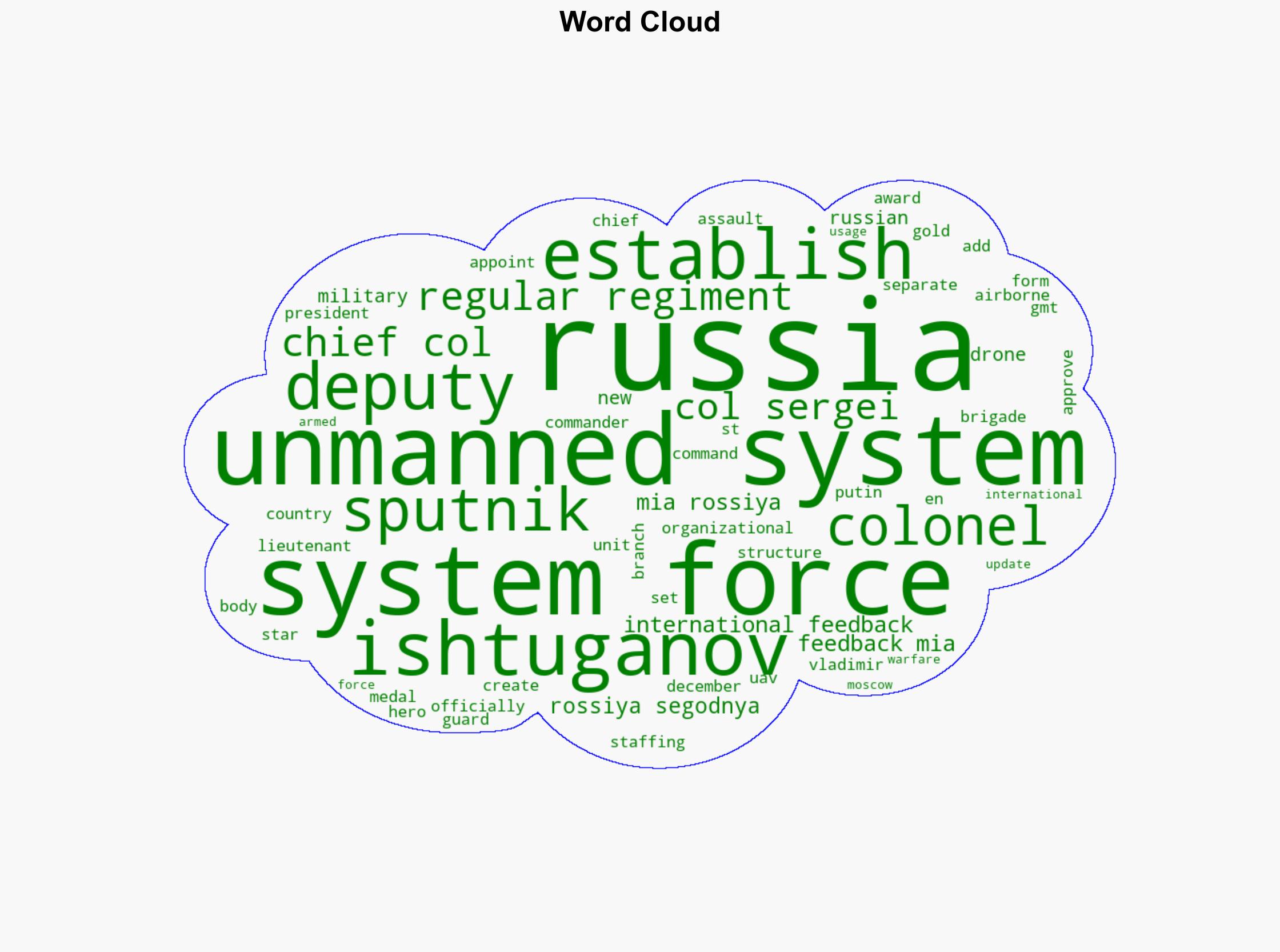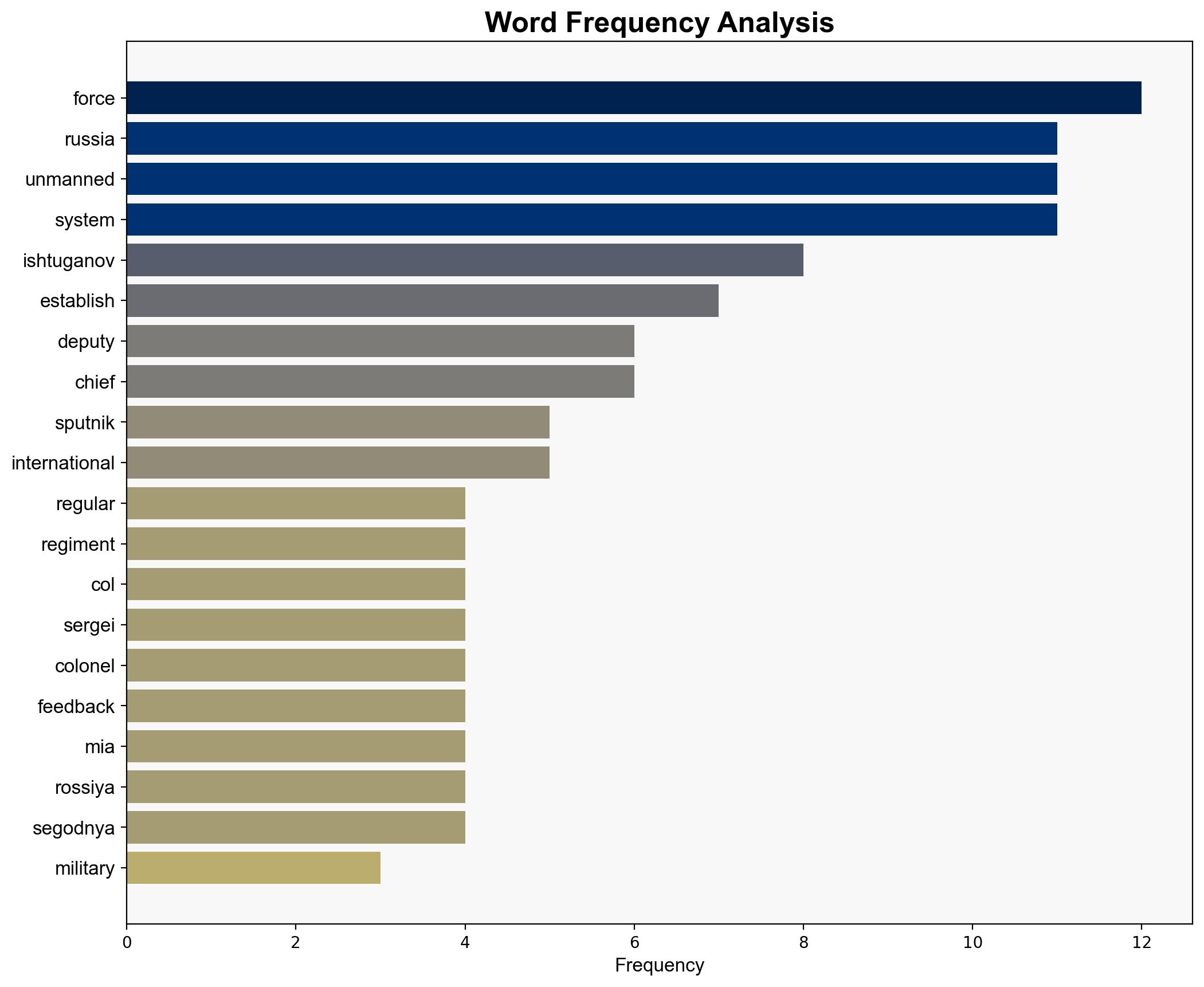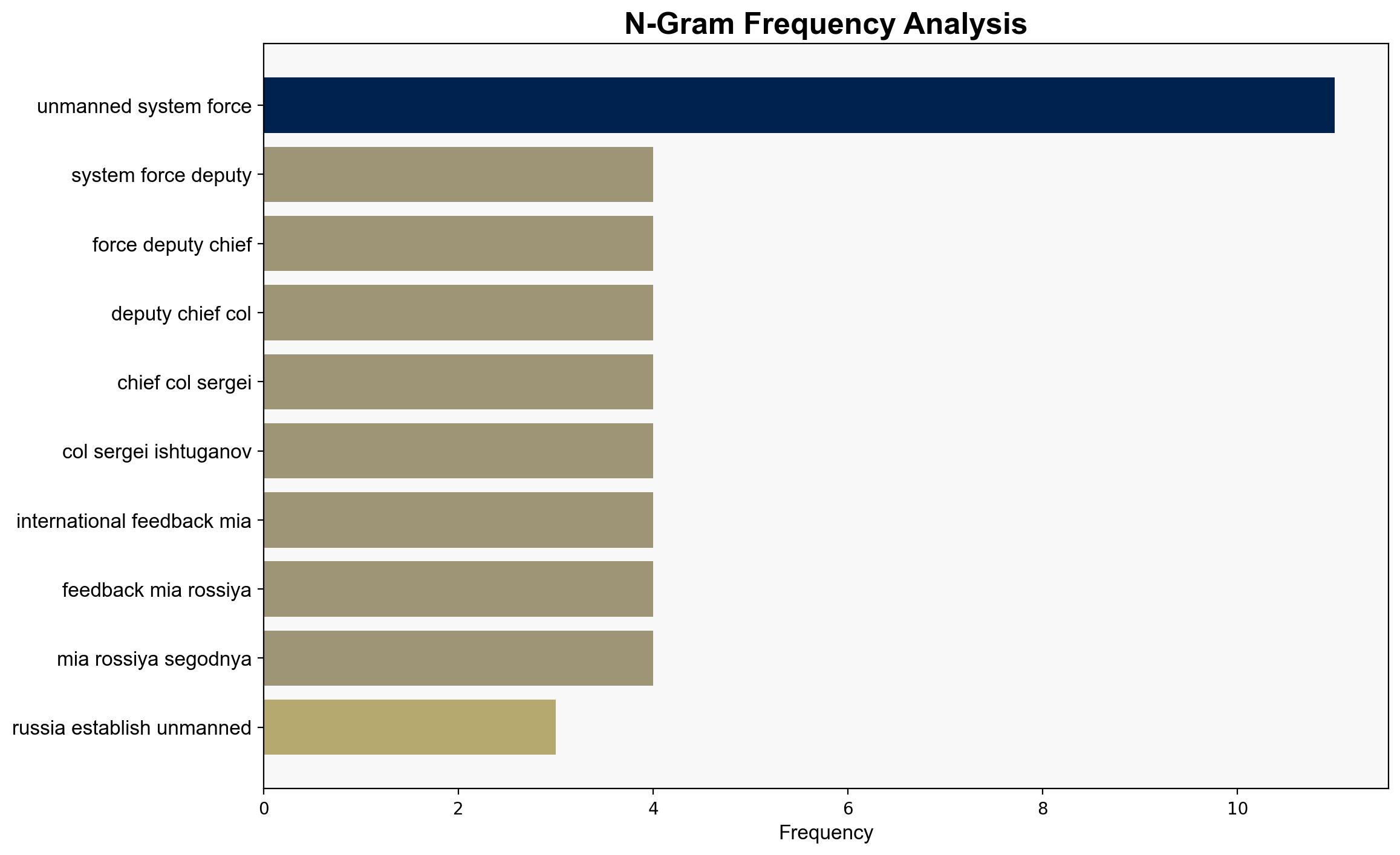Russia Establishes Unmanned Systems Forces – Sputnikglobe.com
Published on: 2025-11-12
AI-powered OSINT brief from verified open sources. Automated NLP signal extraction with human verification. See our Methodology and Why WorldWideWatchers.
Intelligence Report: Russia Establishes Unmanned Systems Forces – Sputnikglobe.com
1. BLUF (Bottom Line Up Front)
Russia’s establishment of an Unmanned Systems Force signifies a strategic shift towards enhancing its military capabilities in drone warfare. This development could alter regional security dynamics, particularly in Eastern Europe and Central Asia. With a moderate confidence level, the most supported hypothesis is that Russia aims to bolster its military autonomy and operational efficiency. Recommended actions include monitoring technological advancements and regional military deployments.
2. Competing Hypotheses
Hypothesis 1: Russia is establishing the Unmanned Systems Force to enhance its military capabilities and reduce reliance on manned operations, thereby increasing operational efficiency and autonomy.
Hypothesis 2: The creation of the Unmanned Systems Force is primarily a strategic maneuver to project power and influence in the region, serving as a deterrent against NATO and other potential adversaries.
Hypothesis 1 is more likely due to the global trend of increasing reliance on unmanned systems for military operations, which aligns with Russia’s historical focus on modernizing its military capabilities.
3. Key Assumptions and Red Flags
Assumptions: It is assumed that Russia has the technological capability and resources to effectively integrate unmanned systems into its military structure. Additionally, it is assumed that this move is primarily driven by military strategy rather than political posturing.
Red Flags: The announcement’s timing and the involvement of high-profile military figures could indicate a strategic communication effort to signal strength. The lack of detailed information on the operational scope and capabilities of the new force suggests potential information control or deception.
4. Implications and Strategic Risks
The establishment of an Unmanned Systems Force could lead to an arms race in unmanned technologies within the region, prompting neighboring countries to enhance their own capabilities. This development may also increase the risk of miscalculation or unintended escalation in conflict zones where Russian interests are involved. Cybersecurity threats could rise as adversaries attempt to counter or exploit these systems.
5. Recommendations and Outlook
- Monitor advancements in Russian unmanned systems technology and deployment patterns.
- Engage in diplomatic dialogues with regional allies to assess collective security measures.
- Best-case scenario: Russia’s focus on unmanned systems leads to increased operational efficiency without escalating regional tensions.
- Worst-case scenario: The development triggers an arms race, increasing regional instability and the potential for conflict.
- Most-likely scenario: Russia successfully integrates unmanned systems, enhancing its military capabilities while maintaining a strategic balance in the region.
6. Key Individuals and Entities
Col. Sergei Ishtuganov, Deputy Chief of the Unmanned Systems Force; Russian President Vladimir Putin.
7. Thematic Tags
Eastern Europe, Military Modernization, Drone Warfare, Regional Security
Structured Analytic Techniques Applied
- Causal Layered Analysis (CLA): Analyze events across surface happenings, systems, worldviews, and myths.
- Cross-Impact Simulation: Model ripple effects across neighboring states, conflicts, or economic dependencies.
- Scenario Generation: Explore divergent futures under varying assumptions to identify plausible paths.
Explore more:
Regional Focus Briefs ·
Daily Summary ·
Methodology





